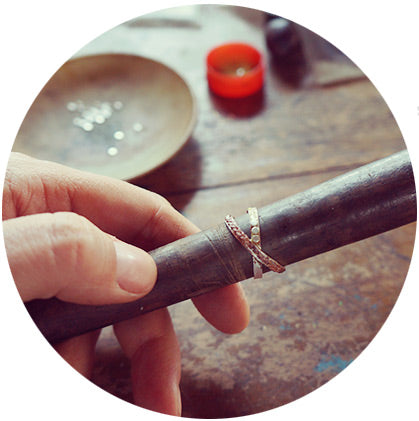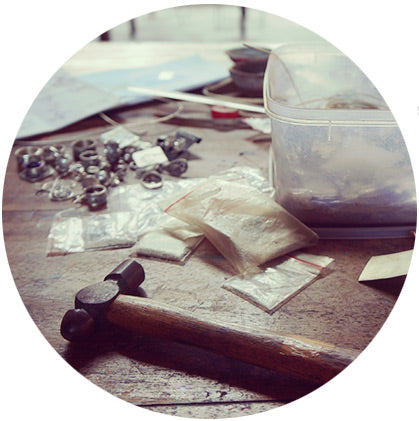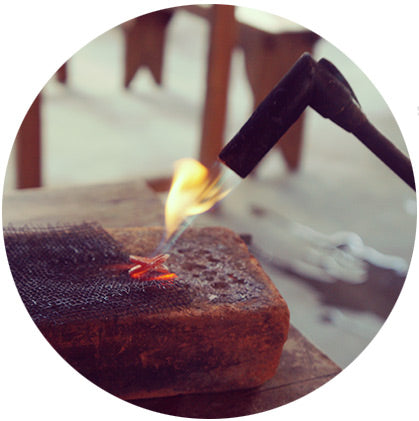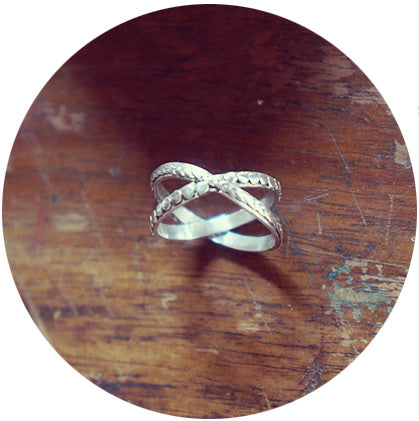Anna at Pondok Pekak
![]()
Master Makers is a series of posts focused on brilliant makers with the ability to teach others how to do what they do.
Learn the art of silversmithing in Ubud, Bali
Ubud is the artistic heart of Bali—regardless of all the penis-shaped bottle openers you’ll find at vendor stalls (mind you, they’re made from finely-crafted wood, but wieners nevertheless.) But this post isn’t about the kitsch at tourist markets, it’s about the spirit behind the goods they hand make here.

Bali craftsmanship honors knowledge passed down from generation to generation. Rather than concerning themselves with Chinese quantity, the Balinese focus on quality and care—mastering a single skill they’ll continue to perfect for decades. It’s a love of making things and their desire to share what they know that brought me to a class taught by a local silver expert at the Pondok Pekak library (I know…a library!)
Anna, a silversmith for close to 30 years, owns a jewelry shop about 20 minutes by scooter outside Ubud. Like many craftspeople in Bali, their art is a family trade, and Anna can trace her silver lineage back 3 generations.

As our friends at Bangkok's Smitheries explained, jewelry making can seem extremely complex from an outsiders perspective. However, once you get used to all the “intimidating” tools required to do it, the process gets much easier—and I found this out first hand.

Anna first showed me how you must prepare the silver. 100% silver is too soft, so it's blended with copper (it’s why sterling silver is marked .925.) After the two metals meld, they can be rolled into thin strips for a ring or flattened into a sheet for a cuff bracelet. Balinese jewelry is traditionally very ornate with filigree and tiny detailed beading, so once the piece is sized, it's adorned with small pieces of silver to make a motif. After the design is finished, there's still a lengthy step-by-step process to bring it to its final, shiny state. Steps include boiling it in lime, waxing, polishing and brushing followed by more polishing, more buffing and more polishing.

There are several studios in the Ubud area that offer private half-day classes that range from $20 to $40—usually these classes are priced based on how much silver they offer (usually from 3g to 10g.) Anna’s class cost about $22 USD and included 3 grams of silver, but Chez Monique, Studio Perak and WS Studio are all qualified options as well. I knew I wanted something a bit more dainty, and from the looks of things 3 grams of silver got me exactly what I wanted.

Today, Anna showed me a trade she’s been mastering from the day she turned six—a skill she plans on teaching her own two boys when they reach a similar age. It’s this willing and joyful transfer of knowledge that makes the island of Bali so unique, and to know that what you just learned had been passed down through hundreds of years of tradition… that feels like what I created in class is more like a family heirloom.
If you're ever in Ubud, Bali, you can check out the classes at the Pondok Pekak Library and Learning Center..
You can see more of the people and places we're discovering by following us on Instagram (Megan runs that) and adding us on SnapChat (Tyler runs that)
Leave a comment
Comments will be approved before showing up.

